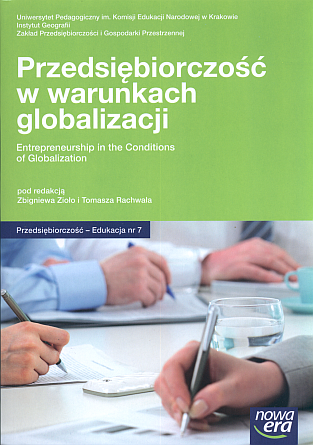Strategiczne kierunki kształtowania Kielc jako potencjalnej metropolii
DOI:
https://doi.org/10.24917/20833296.7.17Słowa kluczowe:
kształcenie, Kielce,Abstrakt
The potential Kielce metropolis, located between well-developed Warsaw and Cracow metropolises, is not highly competitive when compared with domestic ones. Focusing on selected components of the economy, thanks to which a specialization is strived for, determines a bigger chance of arising in the settlement ordination of Poland and allows using a potential as well as simplifies actions in promotion and information ventures. In progressive metropolization it is necessary to increase competitiveness of regions to make them attractive areas not only for local people but especially for foreign and domestic VCs. According to The Conception of Spatial Development of Kielce Functional Area in Metropolis Progress Aspect the formation of Kielce metropolitan functions, especially the replacement of industrial centre as a city function by administrative and service sector centre, is dated to early 90s. These functions are generated by, among other things, dynamically developing trade fair centre, expansion of the higher education and financial institutions sector, administrative institutions, well-developed trade and service chain, presence of business support institutions and units, the presence of international concerns, developing culture, strong media and publishing services sector, well-developed sport base and finally strong relations between the city and nearby communes. Kielce area is non-competitive with other metropolises especially because of adverse demographic trends, insufficiently functioning domestic and European communication, low technological innovativeness, only a few international agencies and lack of specialized congressional service. There are sectors in Kielce Metropolis Area that are especially important for its balanced and dynamic development or are an essential advantage over regional contenders in rivalry for recruitment of foreign VCs. These are: constructional sector, trade fair sector and other services connected with it, stadiums and other sports facilities activity.
Bibliografia
Analiza potencjału Kieleckiego Obszaru Metropolitalnego dla wybranych trzech sektorów gospodarki, 2009, Wydział Projektów Strukturalnych i Strategii Miasta, Centrum Obsługi Inwestora, Kielce.
Jałowiecki B., 1999, Metropolie, Wyd. Wyższa Szkoła Finansów i Zarządzania, Białystok.
Koncepcja zagospodarowania przestrzennego obszaru funkcjonalnego Kielc w aspekcie rozwoju
metropolizacji, 2007, ŚBRR, Kielce.
Majcher P., 2010, Analiza Kielc jako potencjalnej metropolii, praca magisterska napisana na Uniwersytecie Pedagogicznym w Krakowie.
Parysek J.J., 2003, Metropolie: metropolitalne funkcje i struktury przestrzenne [w:] Funkcje metropolitalne i ich rola w organizacji przestrzeni. XVI Konserwatorium wiedzy o mieście, I. Jażdżewska (red.), Łódź.
Słownik geograficzno-krajoznawczy Polski, PWN, Warszawa 1998, s. 766.
Ustawa z dnia 27 marca 2003 o planowaniu i zagospodarowaniu przestrzennym.
www.gronotargowe.pl
www.invest.kielce.pl
www.korona-kielce.pl
www.polfair.com.pl
www.targikielce.pl
Zaktualizowana koncepcja przestrzennego zagospodarowania kraju, 2005, Rządowe Centrum Badań Strategicznych, Warszawa.
Zioło Z., 1999, Transformacja struktur subregionalnych Polski południowo-wschodniej w okresie zmian systemu gospodarowania, Wyd. PAN, Kraków.
Pobrania
Opublikowane
Jak cytować
Numer
Dział
Licencja
Artykuły publikowane są zgodnie z warunkami licencji Creative Commons (CC BY-ND 4.0; uznanie autorstwa-bez utworów zależnych).

